Feedback is a part of every great formative assessment. And a lot has been written about how to give effective and meaningful feedback.
But nothing has solidified the effectiveness of meaningful feedback for me more than the daily conversations I now have with my two-and-a-half-year-old. She is constantly refining her understanding of syntax and semantics, solidifying her understanding of the world around her, and building her self-esteem–all through the words that we exchange.
These kinds of conversations with readers–hearing their thinking and asking them to clarify what they mean–help them in the moment of their understanding. Nothing is a more powerful tool for student learning and growth.
Conference Starting Points
Everything I learned about reading workshops and conferences started with Nancie Atwell and Lucy Calkins. They are the workshop gurus that you should turn to for all of your burning questions. But even if you aren’t ready to jump into a workshop, you can still use conferences in your classroom.
The basic structure of a reading conference is:
- Gather data about the reader
- Compliment the reader
- Teach the reader something new
- Jot notes about the reader’s thinking and how you pushed him/her; plan your follow up
In a conference, you can use questions to get at the heart of a reader’s confusion or difficulty:
- What questions do you have as you are reading?
- What in the text makes you think that?
- I noticed… I wonder…?
Depending on the student, I might have them read part of their book aloud to me, and then ask them a question. I may also read their response journal over their shoulder, and then ask them a question about it, or ask a big question (What is the theme of your book?). From here, I can scaffold if they aren’t getting to this (What are some of the important moments of your book? What are some things that the characters are learning?). In a conference, I can also look back at an exit ticket and ask students to clarify what they meant by something they wrote.
Logistics
In a good week, I could confer with five students a day. So I would usually allow myself two weeks to get to each student in a class. Sometimes I would have to make daily quick returns to those needy students until they got on track. So, three students a day, over the course of two weeks, is 30 students. This translates to 15 minutes of reading or independent practice that the other students are working on, while you make your rounds conferring with each student for three to five minutes.
While planning conferences, I would meet with students randomly. If there were a pattern, my students would become complacent. And I liked to keep them on their toes.
It’s important to note, too, that conferring has its own special way of keeping students on task. You are among the students. And your proximity to them makes them stay focused. You can move to different sides of the room between conferences, when you are taking notes, and therefore can quell whispers.
 Another benefit: your notes are a cheat sheet. Doctors take notes, in order to help them remember what they talked about, what’s happening in your personal history, and why you are there. Teachers can do the same thing. I’ve used a clipboard with student names, and I’ve also used my iPad with Evernote and a page for each student. (A sample note is listed on the left.)
Another benefit: your notes are a cheat sheet. Doctors take notes, in order to help them remember what they talked about, what’s happening in your personal history, and why you are there. Teachers can do the same thing. I’ve used a clipboard with student names, and I’ve also used my iPad with Evernote and a page for each student. (A sample note is listed on the left.)
Even if you aren’t using a workshop model, you can incorporate conferring with readers. (But, no matter the grade level you teach, you should really consider workshops! You can learn more about workshops HERE or HERE or HERE or HERE and especially HERE.) You can do so while students are working on whole-class novel reading or working on questions or starting their homework.
The Benefits
Conferring really helped me to become an effective teacher. I was connecting with students on a personal level and felt like I knew each and every one of them like never before. Students were also held accountable for their reading and thinking, and started to take more ownership over their own learning. And by meeting with students individually and then talking to the class as a whole group about emergent patterns and provocative statements, I was able to help connect readers and create community.
Caroline Thompson (@TeacherThompson) taught middle school ELA for 12 years in Lake Orion before becoming a stay-at-home mom. She supports AARI teachers for Oakland Schools as an independent literacy consultant in the areas of digital media, professional development, and non-fiction resources. Caroline is a Reading and Writing Workshop advocate, a 2008 Oakland Writing Project Teacher Consultant, and a 2009 Oakland County Outstanding Teacher of the Year Nominee. She has a BA in English from Michigan State University and a Masters in the Art of Teaching Reading from Oakland University. She lives in Berkley with her husband and their 2-and-a-half-year-old daughter.

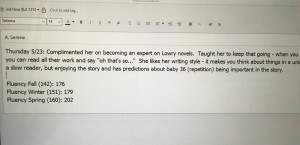
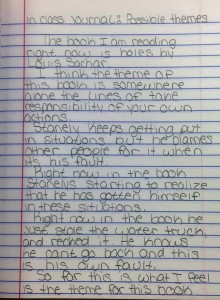


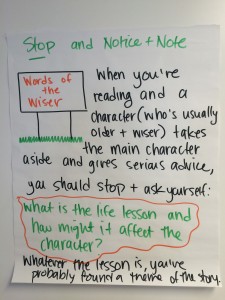


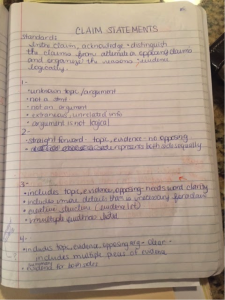
 Amy Gurney is an 8th grade Language Arts teacher for Bloomfield Hills School District. She was a facilitator for the release of the
Amy Gurney is an 8th grade Language Arts teacher for Bloomfield Hills School District. She was a facilitator for the release of the  At the start of December, I attended a workshop at the Detroit Port Authority Lofts, which, it turns out, is an event space, not a place where ships check in. I’ve lived in southeast Michigan my entire life, and spent many, many hours in the city. But I didn’t know this place was there. I thought, The city of Detroit is like teachers: there’s so much good stuff happening, but no one knows about it, or the ones who do know treat the information like it’s secret.
At the start of December, I attended a workshop at the Detroit Port Authority Lofts, which, it turns out, is an event space, not a place where ships check in. I’ve lived in southeast Michigan my entire life, and spent many, many hours in the city. But I didn’t know this place was there. I thought, The city of Detroit is like teachers: there’s so much good stuff happening, but no one knows about it, or the ones who do know treat the information like it’s secret.
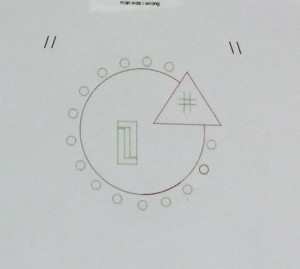 were learning about conics. With that, they created logos for us to vote on. Most of my department picked the logo shown on the right. It reflected our desire to have a design that opened a conversation, by provoking a person to ask about the logo. The shapes are meant to represent aspects of our discipline and practice. We didn’t want books or pens or apples. Too
were learning about conics. With that, they created logos for us to vote on. Most of my department picked the logo shown on the right. It reflected our desire to have a design that opened a conversation, by provoking a person to ask about the logo. The shapes are meant to represent aspects of our discipline and practice. We didn’t want books or pens or apples. Too  Rick Kreinbring teaches English at Avondale High School in Auburn Hills, Michigan. His current assignments include teaching AP Language and Composition and AP Literature and Composition. He is a member of a
Rick Kreinbring teaches English at Avondale High School in Auburn Hills, Michigan. His current assignments include teaching AP Language and Composition and AP Literature and Composition. He is a member of a  For the next two years, I will be part of the
For the next two years, I will be part of the 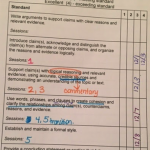
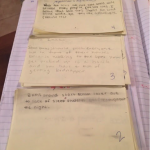
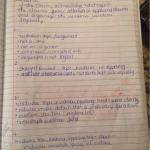
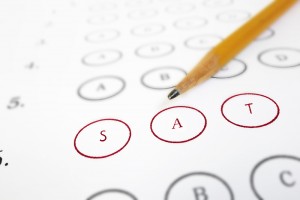 I don’t know about you, but when I got my first look at a sample SAT essay prompt, my eyes just about bugged out of my head.
I don’t know about you, but when I got my first look at a sample SAT essay prompt, my eyes just about bugged out of my head. I kept coming back to the portion of the essay that asks students for analysis. At first, I wondered if we could put together a toolbox of the most common ways of building an argument, or a list of a few “magic” rhetorical devices students could expect to encounter. But the more I read and explored, the more I came back to the answer that no, there would be no magic lists or silver bullets for this test. What the analysis portion essentially boils down to is: Can students understand what an author’s purpose is, and analyze the moves the author made to achieve that purpose? This isn’t a test prep strategy; it’s just what good readers and writers can do!
I kept coming back to the portion of the essay that asks students for analysis. At first, I wondered if we could put together a toolbox of the most common ways of building an argument, or a list of a few “magic” rhetorical devices students could expect to encounter. But the more I read and explored, the more I came back to the answer that no, there would be no magic lists or silver bullets for this test. What the analysis portion essentially boils down to is: Can students understand what an author’s purpose is, and analyze the moves the author made to achieve that purpose? This isn’t a test prep strategy; it’s just what good readers and writers can do!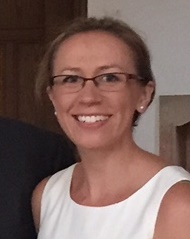 Megan Kortlandt is a secondary ELA consultant and reading specialist for the Waterford School District. In the mornings, she teaches AARI and literacy intervention classes at Waterford Mott High School, and in the afternoons, she works with all of Waterford’s middle and high school teachers and students in the Curriculum, Instruction, and Assessment department. Additionally, Megan works with Oakland Schools as an instructional coach for AARI. She has presented at various conferences including the Michigan Council for Teachers of English and Michigan Reading Association annual conferences.
Megan Kortlandt is a secondary ELA consultant and reading specialist for the Waterford School District. In the mornings, she teaches AARI and literacy intervention classes at Waterford Mott High School, and in the afternoons, she works with all of Waterford’s middle and high school teachers and students in the Curriculum, Instruction, and Assessment department. Additionally, Megan works with Oakland Schools as an instructional coach for AARI. She has presented at various conferences including the Michigan Council for Teachers of English and Michigan Reading Association annual conferences.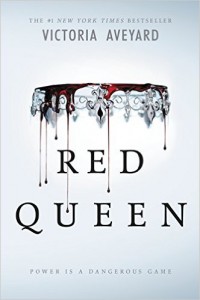
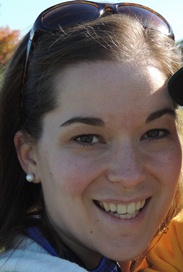
 As 2015 came to a close and winter break was upon us, I had some time to reflect upon my teaching practice, as I planned for my next units of study. I remembered how, at the beginning of the year, we received from our Literacy Specialist an immersion packet. The packet suggested several teacher-written pieces, which would go along with the units from Atlas.
As 2015 came to a close and winter break was upon us, I had some time to reflect upon my teaching practice, as I planned for my next units of study. I remembered how, at the beginning of the year, we received from our Literacy Specialist an immersion packet. The packet suggested several teacher-written pieces, which would go along with the units from Atlas.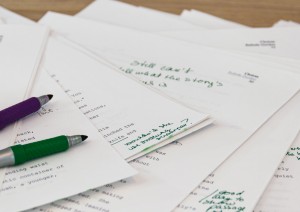 After I submit my pieces, our editor does his thing, which means inevitable changes to sentence structure, word choice, and sometimes even titles. I have to admit, it can be hard to take at times. This made me realize that I need to be more gentle in my approach with my students; more conversation needs to happen as I go through their pieces. It also made me realize how shared writing, revising and editing can help my students achieve better results.
After I submit my pieces, our editor does his thing, which means inevitable changes to sentence structure, word choice, and sometimes even titles. I have to admit, it can be hard to take at times. This made me realize that I need to be more gentle in my approach with my students; more conversation needs to happen as I go through their pieces. It also made me realize how shared writing, revising and editing can help my students achieve better results. Beth Rogers is a fifth grade teacher for
Beth Rogers is a fifth grade teacher for 
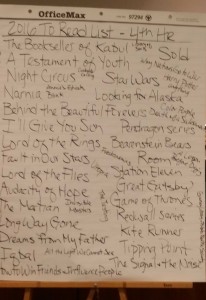
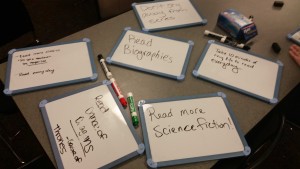 This last station was key for the students.
This last station was key for the students. 